

Seven workers at the Embassy Suites hotel in Irvine have filed a complaint with Cal/OSHA against the parent company, HEI Hotels and Resorts, about the hotel’s so-called safety program. These workers, who are currently in an organizing campaign with UNITE HERE Local 11, say that this program discourages workers from reporting injuries on the job to reach the goal of an “accident-free workplace.”
Now Cal/OSHA is investigating HEI’s “Safety Bingo” program, which offers up to $25,000 or a new car as the grand prize. “Safety Bingo” promotes a blame-the-worker mentality instead of addressing the real hazards that exist.
“They could be using that prize money instead to fix the hazards and protect workers from getting injured in the first place,” says Andrea Nicholls, Health and Safety Coordinator at the L.A. County Federation of Labor, who is assisting the workers throughout the investigation.
This case, if successful, will set a new precedent in California in combatting employer programs that appear to prevent accidents,
» Read more about: Is "Safety Bingo" More Like Safety Russian Roulette? »


In recent years, we have seen companies from across the spectrum make green claims. Sometimes they are selling the truth, but often they are simply selling snake oil – like the presentation I heard recently by Athens Services pitching a 30-year rolling contract extension to the West Hollywood City Council.
Athens is one of the region’s largest trash and recycling haulers, but it is hardly an environmental leader. The company’s proposal to West Hollywood for what’s known as a single stream method of waste disposal could produce unacceptably high levels of wet and hazardous wastes that contaminate recyclables. The proposal also lacks accountability measures to track where recyclables are actually going. By contrast, San Francisco, with the highest diversion rates in the country at 77 percent, relies on a source-separated exclusive franchise system with high standards to meet its goals.
Not only is Athens proposing an environmentally dubious solution, it is asking the City of West Hollywood for something it’s fighting tooth and nail against in Los Angeles – a long-term exclusive contract.
» Read more about: Athens’ Laughable Double Standard for Waste Disposal »


On Saturday, July 28th, over 800 Teamsters gathered at the Pleasanton Fairgrounds to kick off a massive member mobilization against Proposition 32, the “Special Exemptions Act.” Teamsters came from as far away as Redding to Bakersfield, Salinas to Visalia – an area roughly larger than 41 states. View photos of the event here.
This followed a similar kickoff in El Monte in April which was attended by over 1,400 Southern California Teamsters.
Attendees learned how Prop. 32, an initiative on this November’s ballot, is very misleading. The initiative says it will remove “special interest money” from politics, when actually it is riddled with exemptions for corporations and Super PACs. Prop. 32 doesn’t reform the broken system, it actually makes it worse by allowing unlimited corporate spending. Furthermore, Prop. 32 will eliminate the voices of working families and unions in the political process.
Joint Council 7 President Rome Aloise:
Prop.
» Read more about: Teamsters: Proposition 32 Is Dangerously Deceptive »


(Note: On August 21 domestic workers rallied in Sacramento for AB 889, a bill that would afford them many of the same rights enjoyed by other California workers. This post by Alex Pearlman first appeared on GlobalPost and is republished with permission.)
They feed the kids and clean the floors, but domestic workers and caregivers are often maligned by a system that allows their abusive employers to fly under the radar.
Working outside of the public eye, domestic workers — whether documented or undocumented — consistently report unsuitable working conditions, unstable pay and unfair labor practices.
But no more, they say, in California.
Domestic workers there are demanding a Bill of Rights that would ensure fair working conditions statewide and mandate minimum wage pay and eight hours of sleep per night. The California Domestic Workers Bill of Rights (CDWBR) would also allow domestic workers to cook their own food in the kitchen they work in,
» Read more about: Domestic Workers Rally for AB 889 and Dignity »

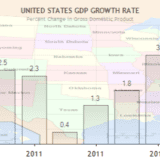
Earlier this summer some friends invited me to a small dinner party where I met a man who manages money for people who have some. He decides where to invest their portfolios in order to get a steady return that they can live on without working. Since we had not met before, I did not want to cloud the new relationship with my attitudes, but I wanted to know what he thought about the state of the economy without prying into his expertise at stock picking.
“So where are we in this economy these days?” I asked.
“We’re nowhere,” he responded, “until we get it growing again.”
“Oh,” I said. “Growing like consumer spending or capital investment or jobs or…?”
“Growth in every way,” he said. “We need to buy more, invest more, yes, but we need more people too.”
I was shocked,
» Read more about: Questioning Economic Growth: How Big Is Big? »


A question that is being asked by talking heads on the right-wing yak shows lately is, “Where are all the green jobs?” Well, there is a simple answer: Those jobs are here in the Southwest, my little conservative Debbie Downers. All over Southern California, Nevada, New Mexico and Arizona you will find massive solar projects with thousands of construction workers getting their first paychecks in months or, in some cases, years. There are so many solar-energy jobs helping us climb out of the absolute depression in the electrical industry that you can’t swing a Birkenstock and not hit one.
That’s right, despite their efforts to kill every single meaningful jobs bill in the House and Senate for the last four years, conservatives have failed to stop the sprouts and shoots of the new green economy.
Why is it happening now? There is a requirement for all of California’s electric utilities to buy 33 percent of our power from renewable energy sources by 2020.
» Read more about: Earth to Right-Wing Pundits: The Green Jobs Are Here »
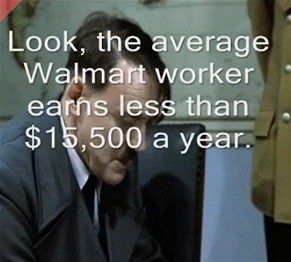
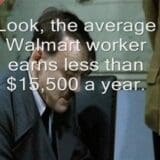
Last week we posted a video here on Frying Pan News, and apparently there’s some outrage. It seems some of our friends at Walmart felt we were comparing them to Hitler, and saw that as horribly unfair.
We got comments from Nikki Ung (ED of the Chinese Chamber of Commerce, which supports Walmart), Bill Imada (lobbyist for Walmart), Dennis Huang (ED of the Asian Business Association, which also supports Walmart) and Greg Jenkins (who may or may not be a Walmart store manager).
We can understand why they are a bit behind the times on this one. After all, the Hitler parody meme has only been around for five or six years, and written about in The New York Times as far back as 2008.
For their reference, however, we suggest they check out a few other videos.
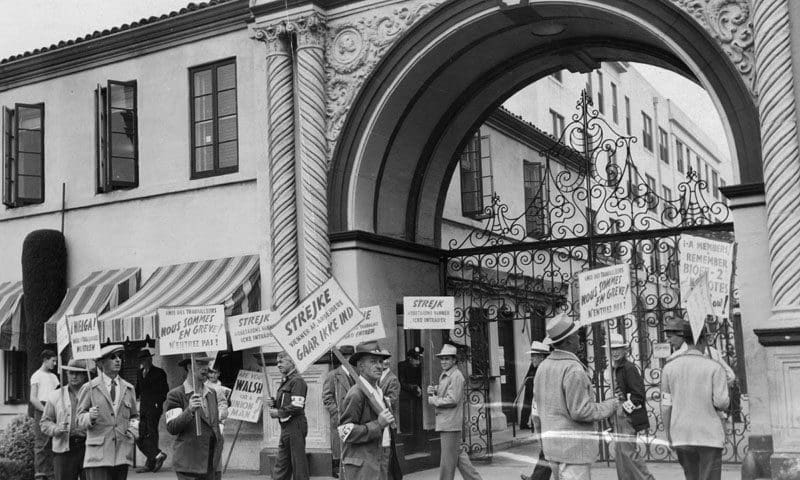

With large-scale domestic manufacturing off-shored and de-unionized, Hollywood film and television production may now be the most heavily unionized private-sector industry in the American economy. I had no idea when I started in the labor movement in the 1980s that I would get my foot in the (back) door of “the business” by working with some of the entertainment industry unions and guilds. Today’s “above the line” unions include the Directors Guild, the Writers Guild and the newly-merged SAG-AFTRA (Screen Actors Guild and American Federation of Television and Radio Artists); “below the line” unions encompass the IATSE (International Alliance of Theatrical Stage Employees – also called the “IA”), the Teamsters and others.
Though I barely knew which end of the camera to look through, I was first hired-on for some interesting projects by IA Local 600 – the Cinematographers Guild. When three regional camera locals were consolidated in the mid-1990s, I wrote and edited mail-outs to members about the merger and,
» Read more about: The Big Picture: Hollywood Unions Fight On »


Jose Tejeda, a member of Warehouse Workers United, talks about the “dark side of Walmart” — working 16-hour days without breaks, and at a fast pace lifting hundreds of heavy boxes every hour. When employees started to unite to improve conditions, they suddenly faced retaliation, shortened work days and less pay.
» Read more about: Walmart to Warehouse Workers: "Your Health Is Not a Concern." »


You will probably never meet Norma Bravilla, and if you did you would never know that this single mother is part of the backbone of L.A.’s economy.
A room attendant at downtown’s Luxe City Center, Bravilla is one of thousands of workers in the city’s largest industry, a sector that generates hundreds of millions of dollars in revenues every year. Her job is to give guests the most enjoyable experience possible by making the beds, cleaning the floors and polishing every piece of glass until it shines. If she does her job well, guests are happy and the hotel industry – as well as the local economy – benefits.
But the people who do this grueling work too often are not rewarded for it. More than 40 percent of L.A. hospitality workers are poor, unable to pay for basic necessities like rent and food.
What that means is that we are not taking care of the women and men who help take of our city and its guests.


(Note: This 2010 L.A. Times op-ed appeared on the 75th anniversary of the signing of the Social Security Act. Today is that landmark legislation’s 77th birthday and, with Social Security certain to be one of the defining debate topics of this year’s presidential contest, we feel this piece is worth revisiting. Reposted with the authors’ permission.)
Alf Landon, the Kansas governor running as the Republican Party’s 1936 presidential candidate, called it a “fraud on the working man.” Silas Strawn, a former president of both the American Bar Assn. and the U.S. Chamber of Commerce, said it was part of President Franklin D. Roosevelt’s attempt to “Sovietize the country.” The American Medical Assn. denounced it as a “compulsory socialistic tax.”
What was this threat to American prosperity, freedom and democracy they were all decrying? It was Social Security, which Roosevelt signed into law on Aug.
» Read more about: Social Security Is 77 Years Old and Still a Hot-Button Topic »


Last month Walmart pulled out of Somerville and Watertown, two cities outside of Boston, claiming it wasn’t economically feasible for the company to open markets in these areas. Here’s what Walmart spokesperson Steven Restivo told Boston.com: “One of the primary deciding factors on any given site – whether it’s in an urban, suburban or rural market – is that it makes sense from a business perspective and contributes to our bottom line.”
It’s hard to believe a company that has been around for 50 years didn’t foresee that these markets wouldn’t “make sense from a business perspective” before it announced plans to open them. Walmart knows what it takes to expand and survive, including hiring expensive lobbyists, handing out money to nonprofits and reducing its market size to avoid local planning requirements. I dug a little deeper and found that the real story is much more complicated than Walmart wants to let on.
» Read more about: Two Massachusetts Towns Say No to Walmart »


A new report from the Alliance for American Manufacturing has United Steelworkers President Leo Gerard renewing his call to repair the crumbling American infrastructure. The report, prepared by Republican former head of Homeland Security Tom Ridge and Robert B. Stephan, a former Assistant Secretary of Homeland Security for Infrastructure Protection, draws disturbing correlations between weak infrastructure and lack of domestic manufacturing with the ability to respond to and recover from disasters and terrorism.
The report reads like an assessment on national security, with Ridge and Stephan referring to the decimation of the American steel industry, the sorry state of infrastructure and over-reliance on foreign actors as indicative of America’s vulnerable position. Ridge and Stephan go so far as to state that placing the building blocks of America in foreign hands leaves them susceptible to substandard labor and hostile political forces. Ridge and Stephan cite toxic Chinese wallboard used for post-Katrina construction and Chinese-made sections of the [San Francisco-]Oakland Bay Bridge that were sent back due to manufacturing defects as examples.
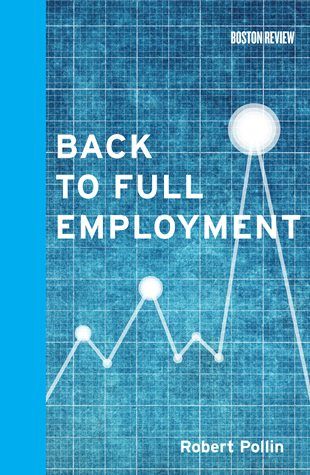
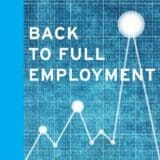
With tens of millions of Americans still out of work, the idea of the U.S. achieving full employment might seem like a pipe dream.
Not so, argues Professor Robert Pollin in his new book, Back to Full Employment. In fact, Pollin (who uses the standard definition of full employment as four percent or less unemployment) suggests that the ongoing jobs crisis offers the perfect opportunity for us to pursue what was once a cornerstone of national economic policy.
Pollin, co-director of the Political Economy Research Institute at University of Massachusetts, Amherst, is no stranger to controversy. Beginning in 1996, when he was asked by living wage proponents in L.A. to conduct a study on how such a policy would affect the city, he has regularly incurred the wrath of free market diehards with his findings that modest mandated wage increases do not wreak havoc on business.
» Read more about: Economist Robert Pollin on Restoring Full Employment in America »
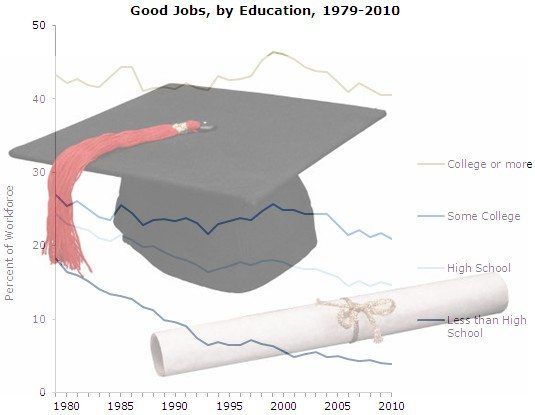
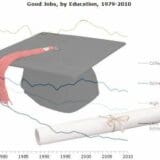
We all know that the key to our economic future is a more educated workforce, right? Here, for example, are the “Guiding Principles” of President Obama’s education policies: “Providing a high-quality education for all children is critical to America’s economic future. Our nation’s economic competitiveness and the path to the American Dream depend on providing every child with an education that will enable them to succeed in a global economy that is predicated on knowledge and innovation.”
Now it’s certainly true that a good education is still the best ticket – other than inheriting wealth – to entering the middle class. In the simplest terms, Americans with a Bachelor’s degree or more earn more than the average wage and those with an Associate’s degree earn less. So it makes sense for us to encourage our children to get a good education. But is the president’s assertion that the path to the American Dream in the new global economy depends on providing every child with a good education true?
» Read more about: Education: The Economy's Silver Bullet? »
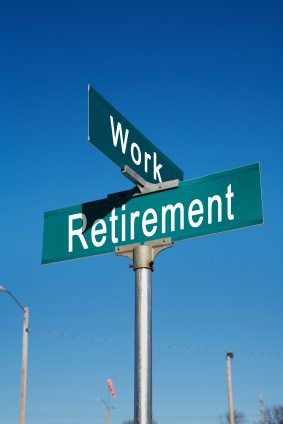
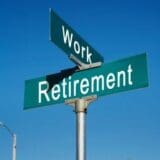
“Is there an age limit on those energy efficiency jobs you were talking about, sir?” asked an elderly woman with a heavy, Eastern European-sounding accent.
Assuming that she was inquiring for her grandchild, I told her that those interested in signing up for IBEW Local 18’s Utility Pre-Craft Trainee position must be at least 18 years old, have a valid California driver’s license and be proficient in math and English.
Just as I was about to continue with my tutorial about the academic and physical fitness requirements, the woman interrupted me with another question.
“Do you have any jobs that I can do?”
The wrinkled skin on her face, thin grey hair and her membership in the senior center I was speaking at suggested that she was at least in her mid-sixties. However, I would not be surprised if she was solidly in her seventies.


When we think about professional performers, we generally assume they’re living the glamorous life, all day, every day. But that’s not always the case.
Indeed, the life of an actor, broadcaster or recording artist can be glamorous. But it can also be incredibly difficult for working performers when it comes to the everyday things, like purchasing health care insurance, or taking a rest break during a 20-hour shoot… even something as basic as removing the elaborate body paint we see so often in music videos these days can be a serious challenge.
That’s why, for decades, performers have been coming together in unions to bargain for fair protections and decent working conditions. And this year, actors and performers took their collective voice to the next level by voting overwhelmingly to merge the two biggest entertainment and media industry unions – Screen Actors Guild (SAG) and the American Federation of Television and Radio Artists (AFTRA) —
» Read more about: Interview With SAG-AFTRA's Gabrielle Carteris »


(This is the last in a three-part series about the misclassification of employees as independent contractors – a practice which affects millions of workers in the U.S., including most of the nation’s nearly 100,000 port truck drivers.)
An illegal practice as systemic and widespread as independent contractor misclassification suggests a collective failure of enforcement. Given the huge fiscal, human and environmental costs, what can be done to ameliorate this failure?
The problem is not that the practice is permitted under current law. On the contrary, the phenomenon is referred to as misclassification precisely because it involves the systematic violation of employee protection laws, justified by re-labeling employees as independent contractors.
Employers misclassify workers essentially because 20th century mechanisms of enforcement have not caught up with this spurious 21st century “business practice.” Lawsuits are expensive, time-consuming, risky and subject to a massive justice gap between industry and workers.
» Read more about: The Fix: Restoring the Rights of Misclassified Workers »
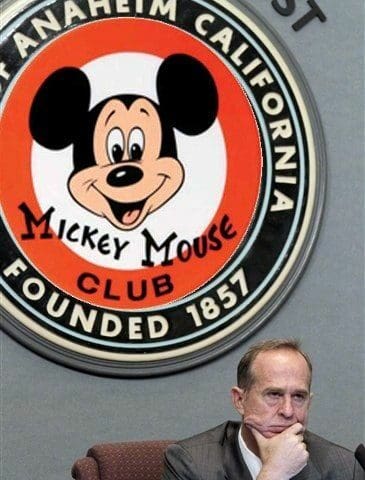
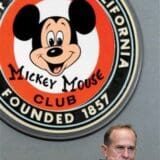
New headlines have emerged almost daily in the explosive weeks following the death of Manuel Diaz, who was unarmed when Anaheim police shot him on July 21st.The night after Diaz’s death, police shot and killed Joel Acevedo — the fifth fatal officer-involved shooting in Anaheim this year. A city council meeting set for Wednesday afternoon (August 8th) at Anaheim High School’s 1,300 seat auditorium is expected to be overflowing. The mayor, the police chief, angry residents—all make the news reports.
But Anaheim’s most high-profile denizen has stayed out of the spot light. “The Mouse”– Disneyland and Disney Corporation – has wisely avoided taking a high-profile stand that would mix the Disney brand with news of conflict and racial strife in Anaheim, where tourism is king.
While Disney doesn’t govern police policy (although some residents argue to the contrary, citing Disney’s influence in the city), The Mouse does unquestionably wield major influence in shaping Anaheim’s economic development gestalt,


On the heels of Walmart’s 50th birthday, several writers have examined the outsized wealth accumulated by six members of the Walton family, the clan that exercises controlling interest over the retail giant. The University of Californian, Berkeley’s Sylvia Allegretto, for example, has written that even as their fellow members of the Forbes 400 club lost wealth between 2007 and 2010, the Walton heirs actually accumulated more.
Meanwhile, Josh Bivens of the Economic Policy Institute notes the Walton family wealth is now “as large the bottom 48.8 million families in . . . wealth distribution (constituting 41.5 percent of all American families) combined.” We took a few of these stats to have some fun picturing how they might play out back at Walmart HQ in Bentonville, Arkansas.